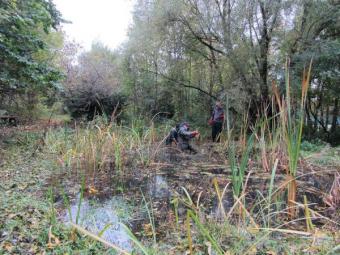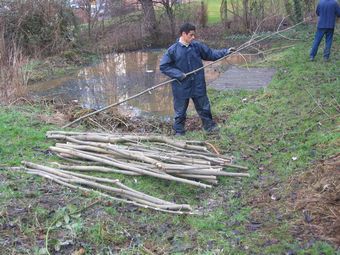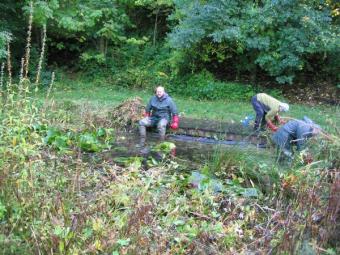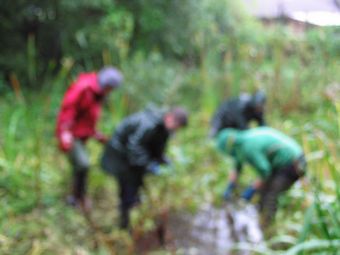
Keep in touch with our current project Living Ponds on this page
This project has been made possible by an award from Postcode Local Trust, a grantgiving charity funded entirely by players of People’s Postcode Lottery.
______________________________________________________________________
BEES have created a small nature reserve on land rented from the University on the Laisteridge lane campus. The Reserve began life in 1990 and although it has seen several changes over the years, it still offers a wonderful space for wildlife near the city centre.
It consists of two medium sized ponds, an area of trees and wildflower rich grassland. The ponds host a large population of Brown Hawker dragonflies and several species of damselfly. Birds regularly seen include goldfinch, great tit, blue tit, long tailed tit, blackbirds and thrushes.
Our priorities for management this autumn are to remove some of the submerged and marginal vegetation to allow more open water. Unfortunately we have New Zealand Pygmy weed, an invasive non-native plant, in the pond which needs controlling. We will also manage the trees to allow more sunlight into the pond.
The Reserve offers a great opportunity for our conservation volunteer group and for local schools to visit for environmental education sessions which compliment the classroom curriculum.
See the gallery of photos.
More
Breathing Places Weekend at BEES UNR
BEES Urban Nature Reserve, Summer Activities 2009






